| Umělec 2003/2 >> acb: A Private Gallery – A Chance to Find Your Own Piece of Art | Просмотр всех номеров | ||||||||||||
|
|||||||||||||
acb: A Private Gallery – A Chance to Find Your Own Piece of ArtUmělec 2003/201.02.2003 Agnes Ivacs | news | en cs |
|||||||||||||
|
Budapest’s newest commercial art gallery is located in the ground-floor flat of a lovely old house in the heart of the city. In the courtyard, stairs with a stone railing lead up to a small porch big enough to host a smallish crowd of people chatting and smoking for openings. From there one can enter the gallery. The stairs, the stone railing and the porch, as well as the house itself, are relics from an earlier time. They form a point in space where old meets new, architecture of the late 19th century meets the art of the early 21st century. This meeting point has been named acb Gallery.
Though I am far from being an art opening addict, I take care not to miss one at acb. Like-minded visitors swarm the exhibition space of the gallery every fifth week, soaking up the its unique atmosphere; it is good and enough to simply to walk around looking at the works, or breathe fresh air on the porch while sipping quality wine. The way the gallery came into being is a peculiar story. Businessmen Gábor Pados and Zsolt Pajor had been collecting contemporary fine art for some time, putting together what is now called the Irokéz Collection. In 2001, they met the young and ambitious art historians János Szoboszlai and Katalin Szőke, who began to manage their privately owned collection, which included at that time 80 pieces of contemporary artwork, including paintings, digital prints, photos and videos. Szoboszlai and Szőke curated an introductory exhibition of the collection and edited its catalogue and web site (www.irokezcollection.hu). Enthusiastic about potential future co-operation, the four of them allied to establish a commercial art gallery. They knew that what they were undertaking was not an easy task. Both Szoboszlai and Szőke, had experience working in the non-profit sector as curators, art institute directors, program coordinators, and art researchers, and they were consequently able to work with an all-encompassing view of the state of the visual arts in Hungary. Like other post-communist countries, Hungary inherited an undeveloped institutional system and an infrastructure which was extremely inefficient at bringing contemporary art to a potential audience, not to mention buyers. As a result, to this day contemporary visual arts reside in the backwater of culture. Professionals face a crisis in the financing and distribution of artistic production, since neither the state nor the foundations have the financial resources to support the arts. Furthermore, with the lack of proper legal regulation, the business sector has shown virtually no interest in taking part in cultural production. Nevertheless, there are a few commercial galleries in Budapest doing their best to overcome such obstacles. acb gallery acbinfo@acbgaleria.hu www.acbgaleria.hu opened its doors on 22 February 2003 with a joint venture — the two businessmen provided the capital required for the launch and the historians offered their knowledge and know-how. The first exhibition displayed a great variety of works by many artists, representing an amazing diversity of genres and mediums. Right from the start, the owners committed themselves to showing the broad spectrum of contemporary fine art, with works ranging from traditional paintings and watercolors to abstract paintings, sculptures, objects and prints referring to and using the topics and techniques of the mass media. There were also works of kinetic sculpture, videos, digital prints and wallpaper, and photographs accompanying the acoustic works. Most everything was made by artists who had contracted with the gallery, though there were a few exceptions. Szoboszlai and Szőke chose to work with artists they knew well and for whom they had previously organized exhibitions, and, importantly, artists who had earned a reputation in the Hungarian and international art worlds. In age, concept and technique they cross diverse fields, but it is precisely this diversity within the contemporary Hungarian art scene that the gallery intends to represent. A short list of the artists and works that acb exhibits: Zoltán Ádám’s paintings and watercolors; the abstract paintings of András Braun; Ágnes Előd, as a representative from the young generation of sculptors; Attila Csörgő’s mobile work which carries along the best traditions of geometry and kinetic sculpture (he participated in the Venice Biennale, 1999); videos and prints by Tamás Komoróczky (who represented Hungarian contemporary art in the Venice Biennale, 2001); Hajnal Németh’s videos, digital prints and wallpaper; Péter Szarka’s photographs of images created by three-dimensional computer modeling; and Gyula Várnai’s photos, digital images, and acoustic works. The exhibitions have come rapid-fire since the gallery opened. There have been five solo exhibitions and a group exhibition in August. However, exhibiting artists’ works is only one part of the gallery’s activity: A no less important task, even mission, is to introduce artists to the art market, Szoboszlai claimed in an interview with one art magazine. From the beginning management of the artists became a priority: maintaining their online portfolios and databases; administering loans of their work to galleries, museums and other venues; helping them write grants; promoting their works to museums and collectors; representing the copyrights of the artists, etc. And second, the creation of a circle of collectors ready to purchase contemporary artworks. They began by offering consultation, so-called “client education,” in the broad arena of contemporary art. Another idea was to provide services to private individuals, companies, and institutions concerning the organization and management of various cultural projects, as well as collaborating with not-for-profit arts organizations to promote contemporary visual arts from Hungary. In other words, they wished to expand the art market by assuming the role of midwife in the course of its birth. A plan of grand proportions, no doubt. Still, the Irokéz Collection is a case in point, proving that there are indeed collectors with a taste for contemporary art, and, better yet, with a commitment to preserve and support it. Indeed, there are more and more people who can afford to collect works of art and are eager to consult experts on purchasing new items. Thus there is obviously a prospect for building a circle of collectors, though it will surely take time. As for the artists contracted to the gallery, I had a chance to talk to most of them. They seemed to be satisfied with the management and services the gallery provided. In fact, artists ring the telephone off its hook offering their portfolios. The last time I popped in, a Portuguese artist rang saying that he had heard of the gallery and would like to show his work there. Though I am still a skeptic, my doubts are on their way to being dissolved. I cannot ignore the facts: the artists are content, the number of collectors growing, and the opening are packed. That said, I feel compelled to tell my first experience in acb. A couple of months have passed since the first opening, but I still clearly remember all the people milling around in a mild ecstasy, stopping at a work for a while before whirling off dizzy with the spectacle and wine. I was particularly impressed by one video by Tamás Komoróczky showing the maniac rising and falling of a ball through the branches of a tree against an aggressive yellow sky. I just stood there, fascinated, staring at the wall-sized screen and thought that I had found my piece, the one that was made for me. Suddenly I was struck by a strange idea: What if everybody who happened to be there that night had found his or her piece and would come again only when the work of that particular artist was showing? In that case, how would they continue to put on shows? I asked myself somewhat foolishly if could Szoboszlai and Szőke were capable of putting on such a show again, now that they had laid all their cards on the table? Now I see what a strange idea it was. Things have, of course, taken a different path. The audience keeps coming back, enthusiastic and curious — perhaps they are all searching for their pieces of their own. acbinfo@acbgaleria.hu www.acbgaleria.hu
01.02.2003
Рекомендуемые статьи
|
|||||||||||||
|
04.02.2020 10:17
Letošní 50. ročník Art Basel přilákal celkem 93 000 návštěvníků a sběratelů z 80 zemí světa. 290 prémiových galerií představilo umělecká díla od počátku 20. století až po současnost. Hlavní sektor přehlídky, tradičně v prvním patře výstavního prostoru, představil 232 předních galerií z celého světa nabízející umění nejvyšší kvality. Veletrh ukázal vzestupný trend prodeje prostřednictvím galerií jak soukromým sbírkám, tak i institucím. Kromě hlavního veletrhu stály za návštěvu i ty přidružené: Volta, Liste a Photo Basel, k tomu doprovodné programy a výstavy v místních institucích, které kvalitou daleko přesahují hranice města tj. Kunsthalle Basel, Kunstmuseum, Tinguely muzeum nebo Fondation Beyeler.
|





















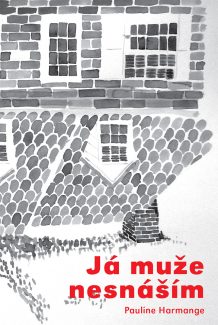




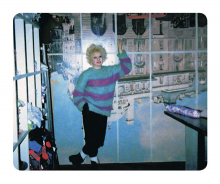
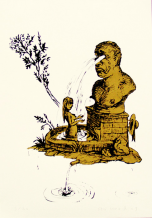
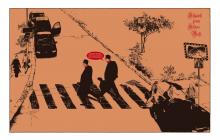
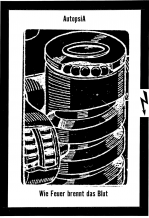


 New book by I.M.Jirous in English at our online bookshop.
New book by I.M.Jirous in English at our online bookshop.
Комментарии
Статья не была прокомментированаДобавить новый комментарий